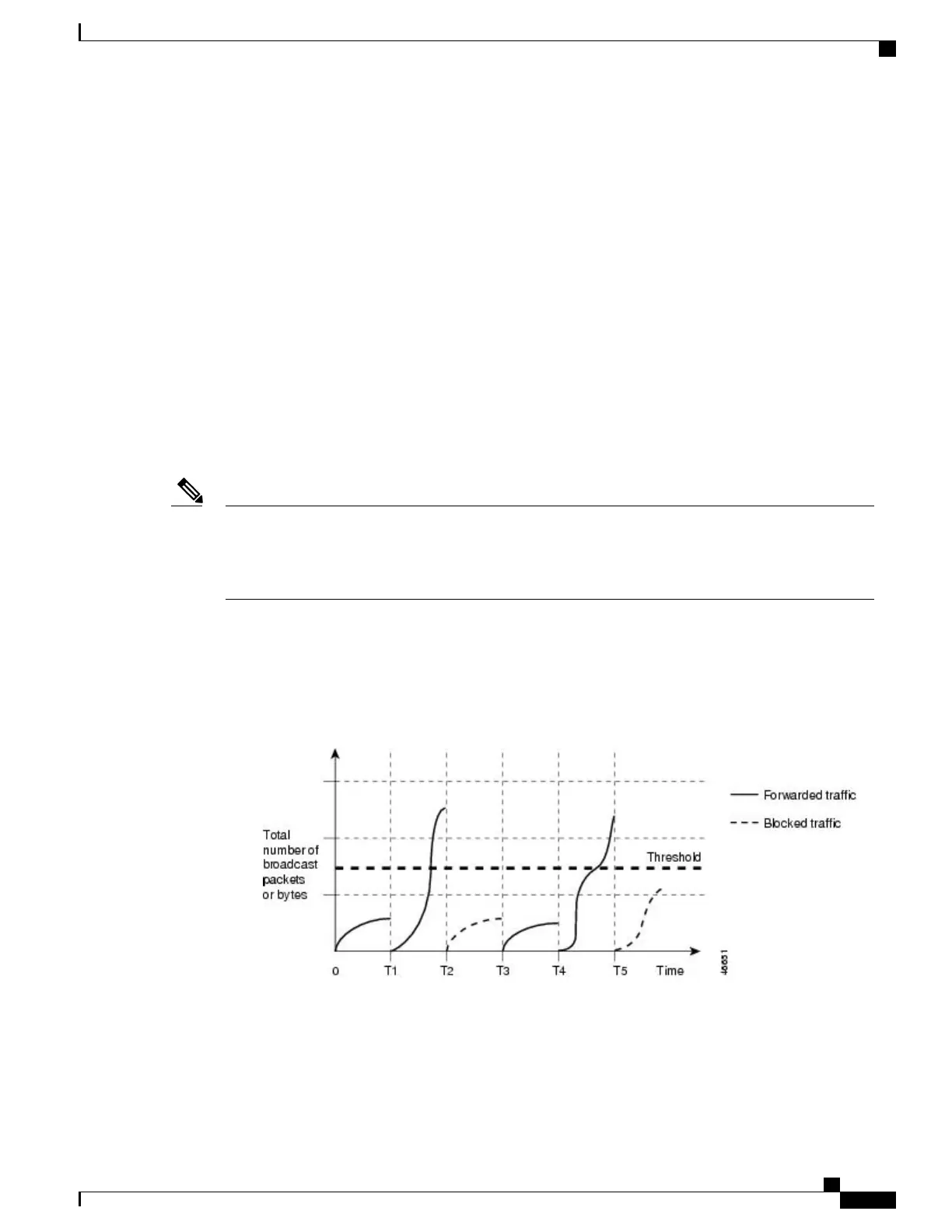How Traffic Activity is Measured
Storm control uses one of these methods to measure traffic activity:
•
Bandwidth as a percentage of the total available bandwidth of the port that can be used by the broadcast,
multicast, or unicast traffic
•
Traffic rate in packets per second at which broadcast, multicast, or unicast packets are received
•
Traffic rate in bits per second at which broadcast, multicast, or unicast packets are received
•
Traffic rate in packets per second and for small frames. This feature is enabled globally. The threshold
for small frames is configured for each interface.
With each method, the port blocks traffic when the rising threshold is reached. The port remains blocked until
the traffic rate drops below the falling threshold (if one is specified) and then resumes normal forwarding. If
the falling suppression level is not specified, the switch blocks all traffic until the traffic rate drops below the
rising suppression level. In general, the higher the level, the less effective the protection against broadcast
storms.
When the storm control threshold for multicast traffic is reached, all multicast traffic except control traffic,
such as bridge protocol data unit (BDPU) and Cisco Discovery Protocol (CDP) frames, are blocked.
However, the switch does not differentiate between routing updates, such as OSPF, and regular multicast
data traffic, so both types of traffic are blocked.
Note
Traffic Patterns
This example shows broadcast traffic patterns on an interface over a given period of time.
Figure 104: Broadcast Storm Control Example
Broadcast traffic being forwarded exceeded the configured threshold between time intervals T1 and T2 and
between T4 and T5. When the amount of specified traffic exceeds the threshold, all traffic of that kind is
dropped for the next time period. Therefore, broadcast traffic is blocked during the intervals following T2
and T5. At the next time interval (for example, T3), if broadcast traffic does not exceed the threshold, it is
again forwarded.
Consolidated Platform Configuration Guide, Cisco IOS Release 15.2(4)E (Catalyst 2960-X Switches)
1467
Information About Storm Control

